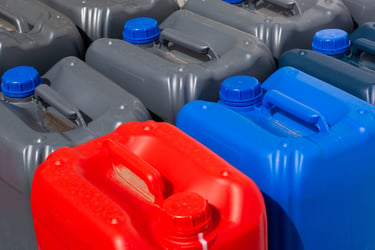A polymer's Melt Flow Rate (MFR), or Melt Index (MI), is crucial for plastic processors and manufacturers. This measure indicates the polymer's flow capability, significantly influencing resin selection and production.
Measuring Melt Flow in Polymers
The quantity of polymer determines melt flow extruded through a specific orifice within a set timeframe. Accurate melt flow measurement is vital for polymer processing efficiency. The most globally recognized standards for Melt Flow testing are:
- ASTM D1238 – Standard Test Method for Melt Flow Rates of Thermoplastics
- ISO 1133 – Determination of Melt Mass Flow Rate (MFR) and Melt Volume Flow Rate (MVR)
Impact of Melt Flow on Plastic Processing
Inconsistent MI or MFR can adversely affect productivity and quality in processing. Testing incoming material for batch variations is crucial to prevent costly issues. High melt flow can cause flashing, leading to increased waste and potential damage to equipment like hot runner molds. Conversely, low melt flow might result in an incomplete part filling, raising the reject rate.
Factors Influencing Melt Flow
Polymer characteristics, like in Polyethylene (PE), depend on the molecular chain structure, affecting flow properties. For instance, Linear Polyethylene (HDPE) has less branching, leading to higher flow rates but weaker mechanical properties. In contrast, Low-Density Polyethylene (LDPE) shows higher entanglement and molecular weight, resulting in a stiffer, harder polymer with lower flow rates.
Key Melt Flow Considerations:
- High Molecular Weight = Lower MI/MFR, indicating stronger bonds and higher viscosity.
- Low Molecular Weight = Higher MI/MFR, signifying easier flow due to increased polymer backbone mobility.
Selecting Melt Flow for Various Processes
- Blow Molding: Opt for resins with low MI (0.2 to 0.8).
- Extrusion: Use resins with an MI around 1.
- Injection Molding: Higher MI resins (10 to 30) are preferable.
Choosing the Right Purge Compound for Melt Flow Variations
Transitioning between resins can be challenging due to melt flow differences. Asaclean offers various purge compounds tailored to your process, temperature, resin type, and melt flow. Understanding your resin's MI/MFR assists in purge selection and, in some cases, in choosing a virgin resin for flushing. Our purging grades are process-specific, and for critical melt flow matching, we provide a concentrate grade for mixing with your resin.
Consultation for Optimal Purge Compound Selection
If you've previously avoided purging compounds due to compatibility concerns, consulting with a technical sales representative is advisable for tailored advice.
Looking to implement a purge program in your plastic sheet extrusion process? Contact our team of experts for tailored solutions that can transform your production efficiency.







Comments